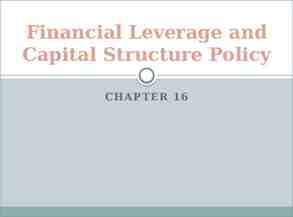PROJECT BUILDING CONSTRUCTION FEDERAL FIRE SAN DIEGO DATE ACADEMY 16
47 Slides6.79 MB

PROJECT BUILDING CONSTRUCTION FEDERAL FIRE SAN DIEGO DATE ACADEMY 16 CLIENT 1

Enabling Objectives Key terminology from IFSTA History Common construction materials Identify building construction types 2

- Assembly - Attic

Balloom Frame

Bar Joist

Bowstring Truss

Butterfly Roof

Beam

Cantilever Roof

Chipboard ( OSB )

Chord

Key Terminology Column Drywall Compression Eave Course Engineered I-Beam Curtain Board Fire Door Curtain Wall Fire Load Decking Fire Wall 1

Column

Compression

Curtain wall / board

Eave

Engineered I-Beam

Fire Door

Fire Load

Flat Roof Roof Gable Wall Gambrel Roof Girder Glue-Lam Beam 2

Gusset Plate Gypsum Board Header Course Hip Roof HVAC

Interstitial Space Live Loads Joists Load Bearing Wall Lamella Arch Mansard Roof 2

Masonry Mortar Non-Load Bearing Wall Open Web Joist Orientend Strand Board (OSB) Parallel Chord Truss

Parapet Party Wall Partition Wall Pitched Roof 2

Plate & Platform Construction

Key Terminology Plywood Rafters Rated Assembly Rebar Reinforced Concrete Sawtooth Roof

- Rebar - Reinforced Concrete

- Saw tooth Roof

Key Terminology Sheathing Spalling Shed Roof 2

Key Terminology - Stud - Tension - Truss

HISTORY 32

History Iroquois Theater Fire of 1903 December 30th,1903 602 deaths Lead to improved fire safety in theaters 33

History Triangle Shirtwaist Factory Fire of 1911 March 25th,1911 Largest industrial disaster at the time 146 deaths Lead to legislation increasing Fire Safety Standards 34

History Binghamptom Clothing Factory Fire of 1913 July 11th,1913 31deaths Lead to better fire exits 35

History Coconut Grove Night Club Fire of 1942 November 28th,1942 492 deaths Lead to reform of safety standards and codes Outward swinging exit doors Upgrades to treatment and care of burn victims 36

History Twin Towers Collapse 2001 September 11th, 2001 2,666 deaths 343 Firefighters Localized collapse zones coupled with extensive fire weakened structural members leading to collapse 37

COMMON MATERIALS 38

Common Materials Wood Masonry Cast Iron Steel Reinforced Concrete Gypsum Glass Fiberglass 39

Common Materials Wood Most common Used in Load-bearing Nonload-bearing walls Trusses Joists Rafters Etc. 40

Common Materials Masonry Block Brick Reinforced Masonry Unreinforced Masonry (URM) Stone 41

Common Materials Cast Iron Rarely used in modern construction Older buildings May crack and shatter with rapid cooling Spalling Connections can fail Leads large heavy sections falling 42

Common Materials Steel Primary structural support in large modern buildings Elongates and warps in high heat As much as 4” in a 50’ ft. section May buckle and fail at ends or middle if restrained At or above temp. of 1,000 F 43

Common Materials Reinforced Concrete Concrete tilt-ups Pre and Post-tensioned slabs Uses compressive strength of concrete with tensile strength of steel Has rebar or steel Can lose strength through spalling Look out for cracks and spalling in exterior walls 44

Common Materials Gypsum Inorganic product Plaster and wallboards are made from High water content Absorbs heat Common interior lining 45

Common Materials Glass and Fiberglass Glass Used as exterior coverings No real thermal protection May Shatter Fiberglass Used for insulation 46

Enabling Objectives Key terminology from IFSTA History Common construction materials Identify building construction types 4







